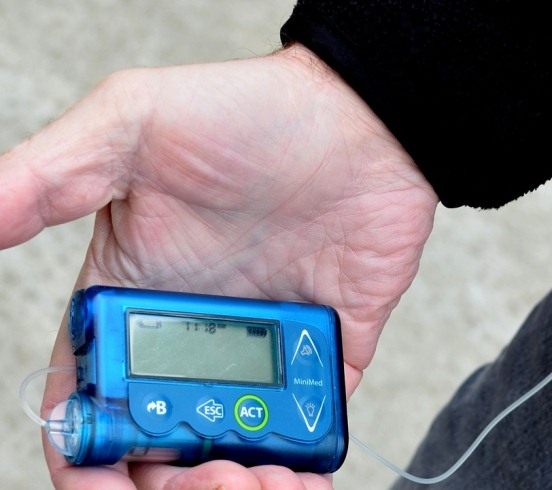Insulin is necessary for the body to effectively metabolize blood sugars. However, in people with diabetes, the body does not efficiently or effectively use insulin to keep blood glucose levels in a healthy target range — this may require extra infusions of insulin for certain diabetes patients. If you’ve been diagnosed with diabetes and require additional insulin, or insulin therapy, you may be interested in learning more about an insulin pump.

An insulin pump is a device that is worn on the abdomen and delivers both basal (regular low doses) and bolus (occasional larger doses) dispersals of insulin directly into the patient’s bloodstream without the need for an injection. While initially this may sound much more convenient, it’s important to understand that beginning insulin pump therapy can be a lot of work and should be taken seriously. At the onset of treatment, you should understand how insulin works in the body, how to count carbohydrates for insulin, and how to combat episodes of low/high blood sugar. Keep in mind that you will still be testing your blood sugar quite often during the day even with an insulin pump — especially at the beginning of use. It’s important to speak to your doctor before purchasing any insulin pump.
Once you speak to your doctor, you can begin asking some other important questions to decide which insulin pump is right for you.
How Much Insulin Does It Hold?
The capacity of the insulin pump is an important factor to consider. Most people prefer their pump to hold enough insulin for three days of use, so that there is no need to be refilling it daily. You can calculate this amount roughly by multiplying your daily insulin intake by three.
Is It Comfortable?
One of the most common reasons that people buy and enjoy their insulin pump is because it is comfortable to wear on their body and fits well with their lifestyle. For example, if you’re a swimmer, you may prefer a watertight insulin pump to reduce the hassle of removing it often. Most users also report preferring a pump with an easy-to-read interface.
Will It Last?
Most insurance companies will only cover the purchase of a new insulin pump every four or more years, so you want to make sure that your insulin pump will stand the test of time and remain up-to-date as technology advances. There are rechargeable insulin pumps that allow for software updates and even integrations with some of the newest devices on the market. You may also want to look for an pump that has the option to integrate with a continuous glucose monitoring (CGM) device, so that you have more technology options. It’s important to make sure that your pump is not only durable, but compatible with software updates for the period that you will be using it, until your insurance company will cover a new pump.
Is It Compatible with My Needs?
There are many different features that you should consider when choosing an insulin pump, but it’s important to make sure that the pump you purchase is something you are comfortable using. There are a lot of options out there, including touchscreen models that look and feel like a smartphone that integrate with CGMs that don’t require a fingerstick. Speak with your doctor to get the correct specifications and dosage amounts for your needs. Your doctor or pump educator should also be able to assist you to better understand how to program your pump and manage doses.
What Happens if It Breaks?
It may be a good idea to explore insulin pump companies, customer service practices/reputations, and their return/replacement policies in the event that the pump stops working. You need your insulin at all hours and it’s crucial that your insulin pump company is also there for you when you need it.
Find Out More
If you have more questions about what to look for in an insulin pump or how to use one, speak to your doctor. They will be able to guide you or point you in the direction of an insulin pump educator that can answer your questions.













